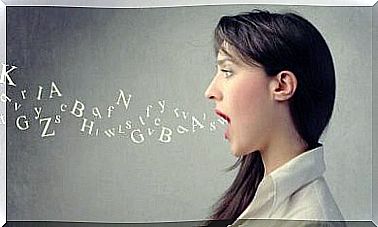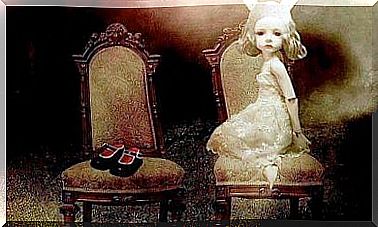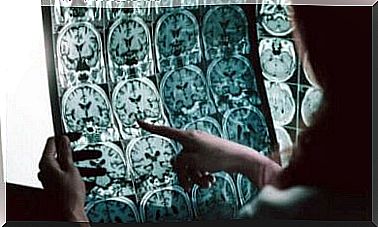Do You Really Know What Delirium Is?

In the 19th century, the concept of insanity was based more than anything else on delusions. Being ” crazy” was synonymous with delusions and vice versa. Nowadays, when we ask someone to describe someone who is crazy, he will say: someone who thinks he is Napoleon or someone who claims to be persecuted by Martians. They suffer from delirium or mental confusion.
In other words, even though we now have a broader concept of mental problems, delirium continues to be part of the stereotype. It is also the diagnostic criterion that gets the most attention. Etymologically, the word delirium is derived from the Latin “delirare”, which means to leave the furrow that has already been plowed. The implication of this is that one “thinks outside the normal.”
In layman’s terms, delirium means “to be dizzy, to be overwhelming.” In virtually every language, delirium is synonymous with madness, illogicality, or loss of reality.
The best definition of delirium is that described by Jaspers in his General Psycopathology (1975). For Jaspers, delusions are false judgments. They are characterized by those who have them holding on to them with strong conviction. They are not influenced by experience or evidence that would be indisputable to us. In addition, their beliefs are often impossible.
To identify a delusion, we should take into account the extent to which the experience meets the following criteria:
- They maintain their faith with absolute conviction.
- The patient experiences as an obvious truth, with great personal superiority.
- They do not let their beliefs be changed by reason or experience.
- Faith is amazing or at least very unlikely.
- Faith is not shared by other members of the same social or cultural group
- The person is fully occupied with his faith and finds it difficult to avoid thinking about or talking about it.
- Faith is a constant source of discomfort or disrupts a person’s social functions.
In short, delusions are characterized by being very conceptually complex. Maybe that’s why it’s hard to define them.
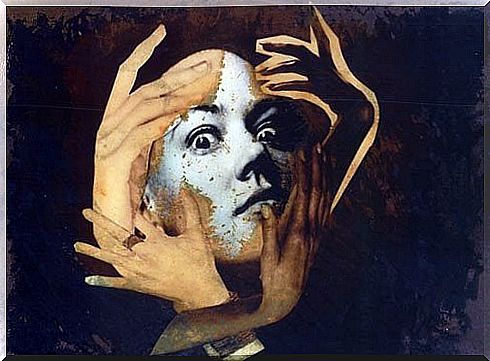
One of the aspects that the researchers worked on the most is how to classify delusions? In this way, they have classified them according to the form they receive and the content they have.
From a formal point of view, the distinction is made primarily by the division of “true” delusions and secondary ones.
Primary delusions
Primary or true delusions do not originate in previous similar experiences. This means that their origin cannot be clearly pointed out. They are important, because once they have blossomed in the mind , they can explain a lot of what has happened to the individual since the delirium started.
The person is usually alarmingly aware that there has been a change in the meaning of his life. Everything seems different, changed. This in turn leads to a horrible feeling that is difficult to describe and even more difficult to explain. The explanation is usually not understandable to the normal person.
Four types of delusions have been postulated (Jaspers, 1975):
- Distorted intuition. For example, a patient realizes that an acronym of his name, Emilio Albeniz de Darco, becomes “you are the murderer of God” (in Spanish Eres el Asesino de Dios).
- Misconceptions. For example, a patient “realizes” when he sees his name on the mailbox of the house that the security police have identified him as the number one enemy of the public.
- Distorted atmosphere. This consists of believing that the world has changed in a subtle but cruel and disturbing way that is difficult to explain.
- Distorted memory. This consists of a disguised re-creation of a real memory or when the patient suddenly “remembers” something that is obviously a delusion. For example, if he “remembers” that he is the Son of God.
Secondary delusions
Secondary delusions are psychologically understandable. They occur as a result of the patient’s attempt to explain an abnormal experience.
For example, a patient may have just experienced a hallucination (he says he has heard a deep voice that spoke to him as if it were his father). This experience is quite strange and deviant. Therefore, it is likely that no one will be surprised if the explanation the patient gives is also quite strange and deviant. He may say that the voice means that he has been chosen by God to save the world, for example.
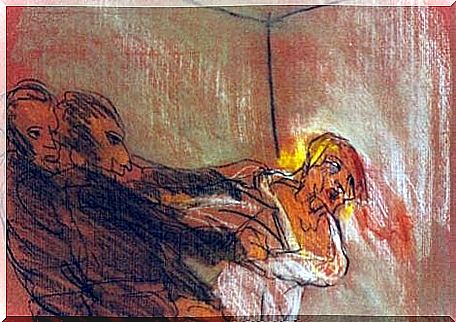
The content of the delusions can vary greatly and there are a lot of different categories to classify them with. Here we will compile the most common, as they are categorized in the DSM (according to the American Psychiatric Association ).
Delusion of being controlled
The subject believes that their feelings, impulses, thoughts or actions are not their own. They are products of some strange and irresistible force. For example, the person feels that they are receiving controlling messages through the TV.
Physical delusions
This category refers to the functions of the body. For example, the patient may think that his brain is rotten or a woman may think she is pregnant even if the tests show the opposite.
Disfigured jealousy
Patients with this type of delusion are convinced that their partners are unfaithful, regardless of whether there are any real indications of such behavior.
Greatness madness
These delusions imply an exaggerated appreciation of personal significance, power, knowledge, or identity. It can be religious, physical or otherwise. An example of this is an individual who thinks he is Napoleon Bonaparte.
Misconception about poverty
The subject believes that he has lost or will lose all his tangible assets.
Misplaced references
The subject believes that events, objects or people in his vicinity have a special and unusual feeling, usually negative and derogatory. For example, a woman may be convinced that a radio program is aimed at her.
Extravagant delusions
A false performance whose content is clearly absurd and without a basis in reality. For example, a man who believes that his tonsils were removed as a child and he was equipped with a manikin with wires that allows him to hear the president’s voice.
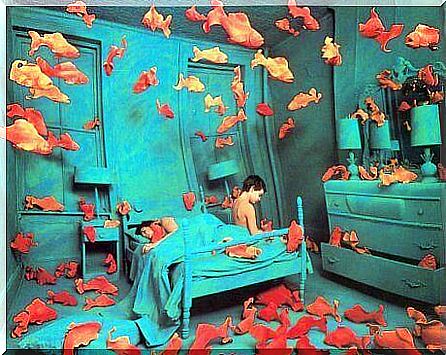
Nihilistic delusions or Cotard’s syndrome
This revolves around the existence of the self, of others and of the world. For example, “the world is over”, “I will never have a brain again” or “I do not have to eat because I am empty”.
Persecution mania
The central theme of these delusions is that the subject is attacked, harassed, deceived, persecuted or is the victim of a conspiracy. For example, a patient who thinks he is being hunted by the FBI or SÄPO.
Misconception about guilt
The patient feels guilty for all kinds of accidents. For example, he believes that he is the cause of the famine in the world.
Capgras syndrome
The patient believes that important people in his life are being replaced by a fraudster, even though they look the same as they always did.
Erotomania
The patient thinks that someone is madly in love with her. For example, a person who fully believes that the Spanish prince is in love with her.
The subject of delusions is spectacular and notorious. Due to its striking nature, it rarely passes unnoticed. There are cases that have become national news in some countries. Here are some examples of this:
The case of “Little Nicolas”
Young Francisco Nicolas Gomez Iglesias has been temporarily released after claiming to be an adviser to the government and the National Security Council of Spain (NIC). He did this with the help of a false ID. The forensic medical report ordered by the judge at the Madrid trial states that he has “a richly decorated greatness madness.”
The assassination attempt on Ronald Reagan
Some believe that John Hinckley Jr.’s attempt to assassinate Ronald Reagan was due to an erotomaniac illusion. A delusion about love. Hinkley believed that the president’s death would lead to movie star Jodie Foster’s public declaration of love for Hinkley.
The film world also reflects delusions, which is a theme in many films. Here are two of them:
Take Shelter (2011)
In this film, a normal father begins to give in to the fear of a possible apocalypse without any rational explanation for that fear.

The Witch (2015)
This film is about a North American family of settlers who move to an isolated settlement in the forest to start a new life. The conflict between the presence of a witch near the settlement and the family’s strong religious beliefs gradually gives rise to delusions.
As we have seen in this article, delirium is a complex mental construction that can involve several shared traits. On the other hand, delusions show the creative power of our mind. It needs to give meaning to the perceived reality. Many delusions are the most likely explanations that a person can find for their hallucinations.
Bibliography :
Belloch, A., Sandín, B. and Ramos, F. (Eds.) (2008). Manual of Psychopathology (2 vols.), Revised edition. Madrid. McGraw-Hill.
American Psychiatric Association (2014). DSM-5. Manual diagnostic and statistical of mental disorders. Editorial Panamedican Medicine.





